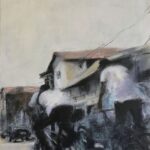
In 1906, Italian economist, Vilfredo Pareto came up with a mathematical formula to describe the unequal distribution of wealth in his country. He observed that twenty percent of the people owned eighty percent of the wealth. His theory became known as Pareto’s Principle. When his theorem was tested, it proved to be accurate. Italians thought he was a genius; he was treated as royalty for his discovery. Then, his name faded with time. Today, few know his name or of his discovery.
After Pareto’s discovery, many others followed his observations and used his formula with phenomenal results. Dr. Joseph Juran, a quality management pioneer way back in the year I was born (1933), recognized this was a universal principle which he called, “Vital Few and Trivial Many.” I have a hunch he learned it from Pareto’s writings but pretended he discovered the truth himself. As I often say, “The secret of originality is in your ability to conceal the source of your discovery.” In the end, people decided Pareto’ Principle sounded better than Juran’s Rules thus, the original thinker got due credit.
The truth of the matter is I learned the 80/20 Rule without knowing about either of these brilliant men. I’m a voracious reader of self-help materials and books on selling. About fifty-eight years ago, I read Think and Grow Rich, my first foray into motivational material. We recently donated over seventy books on these topics to our local library. I have no idea when I first learned of the 80/20 rule but, over the years, I’ve found it to be true. For instance, in football, 20% of the defensive players account for 80 percent of the successful stops. 20 percent of the offensive players account for 80 percent of the points scored. 20 percent of the players earn 80 percent of the income. A star quarterback earns $15 million per year while a rookie role player gets $300,000.
It works the same in art. 80 percent of our sales come from 20 percent of our dealers. At outdoor art shows, the 80/20 Rule applies in full force. Only a few of the people coming in your booth are buyers, the rest are just lookers. It’s up to you to weed out those willing to spend money from the tire kickers. In art galleries, 80 percent of their sales come from 20 percent of their artists. The biggest mistake art galleries make is to dedicate loads of wall space and selling time to the 80 percent of their non-seller artists. Instead, they need to put 80 percent of their effort toward those artists who pay their bills, the top 20 percent. The gallery wastes time trying to sell the 80 percent which, in the end, costs them a lot of money. Think of the wasted time the gallery uses trying to sell the unsalable work. What if they put all their efforts into selling the 20 percent group that are proven sellers? By knowing and using this simple rule, a business cannot help but do better.
For years, Mikki and I have followed the Pareto’s Principle. We work harder for our top 20 percent producing art galleries and clients because they give us the best chance to do well. Santa Fe has been our top-selling market for the past twenty-two years. We always make sure they are the first to be shipped new work when their inventory runs low. We fill their walls before any of our other galleries. They work harder to sell our work because we have proven to be in the top echelon of their money producers. We become like gerbils on a wheel, rushing in circles to keep them supplied with fresh artwork. In turn, they make more sales. The cycle continues, each of us trying to produce more for the other. The more we do for our top galleries, the greater they push our work. It’s the old pat my back and I’ll pat yours.
This small detail enables anyone to be more effective with less effort. You improve by learning how to identify and leverage the 80/20 principle. This well-known, unpublicized secret about the 80/20 Rule can help you achieve better results in business with less effort. This also works in your everyday life relationships. Instead of reaching out to strangers, take time with the people who are your loyal friends. I still communicate with my best friend in high school, a college buddy and Coach Grant Teaff. I maintain contact with scores of artists we have helped along the way. Most we’ve never physically met but, through the internet, have become virtual friends.
Whiteism: The 80/20 Rule is the masked secret of highly effective people/organizations.
Think about it. Although I’ve published ten books, we derive 80 percent of our royalties from two. Mystery of Making IT and Ten Years in Texas are my biggest sellers. Did you know, for example, that 20 percent of customers account for 80 percent of real estate revenue? That 20 percent of our time accounts for 80 percent of the best work we accomplish? I write most efficiently early in the mornings. Mikki does her very best blogs at 6 AM. She is too tired at the end of the day to weave her words.
It’s sad to see our artists friends hooked on the internet. They check their emails every few minutes. They spend time on social media, tinker with their portfolios or work to enhance their resume instead of focusing on improving their product. If you are an artist, your top effort should be to make your product better. Pareto’s Principle shows how we can achieve better results with much less energy, time and resources, simply by identifying and focusing our efforts on the 20 percent that really counts. To be honest, I love the statement “Vital Few and Trivial Many” as a reminder of the rule. Nothing describes our art industry better than those five words. A vital few artists are responsible for the vast majority of art sold; the trivial many clog up the system with sameness.
If you visited an exhibit with eighty pieces you would think one artist painted almost the entire show until you looked at individual signatures. About 20 percent of the pieces will stand out like a ray of sunshine on an otherwise cloudy day. In the near future, I plan to write a piece on the sluggish sameness in the world of art today.
Stop for a few minutes to take inventory. Decide what you produce that is the easiest to sell and the work people like best. Do more of those pieces and less of the other stuff. Look at your outlets that are doing the best for you. Figure out what is working in your career and what is lagging behind. Get rid of the weak and build up the strong. A wise coach will spend the majority of his time with the players who can help him win. Remember the adage; eliminate the negative and accentuate the positive. Make these simple adjustments and see an amazing change in your life.
As my friend Zig Zigler would say, “See you at the top.”














